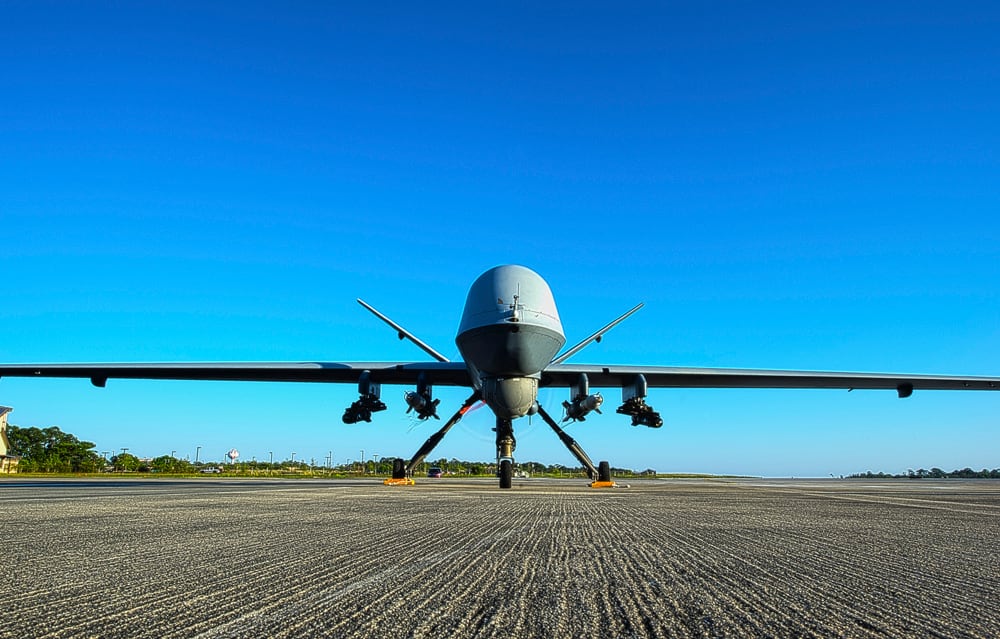WASHINGTON — There have been no signs of mass movements of ISIS fighters to Libya, according to U.S. Africa Command officials.
With ISIS’ physical caliphate in shambles, speculation of what is next for the fledgling terror group continues to drive analysts and U.S. government officials.
“Since 2014, thousands of foreign fighters left North Africa to fight in Iraq and Syria, many of whom could return to Africa if ISIS efforts in the Levant fail,” Robyn Mack, a spokesperson for AFRICOM, told Military Times. “While we have seen no indications of a mass movement of fighters or leadership from the Levant into Libya, it remains a possibility.”
The group is still reeling from its defeat in Sirte, Libya, last December, Mack said.
Sirte was once a stronghold for ISIS fighters until U.S.-backed Libyan fighters liberated the city in December 2016 under a barrage of heavy U.S. airpower, dubbed Operation Odyssey Lighting.
“I believe at one time, they thought they might have a lily pad in North Africa, particularly in Libya. That hasn’t worked out real well for them,” Lt. Gen. Kenneth F. McKenzie Jr., Joint Staff Director, told reporters at a televised press briefing in the Pentagon on Thursday.
Since losing Sirte, ISIS has struggled to reconstitute itself in the war-torn region. ISIS fighters have primarily operated in relatively small disaggregated groups in desert regions just outside the city since their ouster.
The U.S. has bombed several of those location spanning a week period at the end of September. Those salvos by U.S. unmanned aircraft were the first shots fired at ISIS since B-2 bombers dropped a large number of munitions on ISIS camps staged in the desert outside the city in January.
However, the strikes by the U.S. in September called into question whether the terror group was seeking to rebuild itself in Libya after losing much of its territorial possessions in Iraq and Syria.
Pressed by reporters on Thursday at a Pentagon press briefing, McKenzie pushed back on assertions that recent U.S. strikes in Libya, Somalia and Yemen were a result of any kind of ramped up efforts in the region to target ISIS.
“I go back to the point that I’ve hit a couple of times, that really we develop a lot of targets in these places,” he said. “And it takes a long time to process those targets, to get them vetted, to again, to make sure that we’re scrupulously correct in regard to the law of armed conflict and our own values and our own approach to warfare.”
“So if sometimes two or three of them might become available that get close to each other ― I would also just note, parenthetically, that sometimes a strike produces movement and other targets become available,” he said.
Since ISIS lost Sirte, the group has appeared to have trouble maintaining recruitment and force levels high enough to pose a significant threat in the region. ISIS only numbers around 500 fighters in Libya, according to Mack.
“Foreign fighters are likely continuing to bolster ISIS numbers in Libya, although given ISIS’ recent low attack tempo, foreign fighters are probably not substantially increasing ISIS strength in Libya at this time,” Mack told Military Times. “Following the battlefield losses in 2016-2017, ISIS in Libya has maintained a low-level presence in Libya while they are likely attempting to recover.”
Recent propaganda efforts by al-Raṣād al-Filisṭīnī, a pro-ISIS channel seemingly close to the ISIS network active between Gaza and Sinai, have attempted to showcase the group as a powerful force capable of retaking Sirte.
A 14-minute video titled “The Epic Battles of Surt” was posted earlier this week that showcases ISIS fighters firing heavy weapons, including anti-tank guided missile systems, old Russian tanks, heavy machine guns, recoilless rifles and truck mounted ZPU anti-aircraft guns.
But ISIS fighters don’t really have much of this equipment anymore, according to officials at AFRICOM.
“ISIS-Libya forces likely lack the military tactics or strength to retake Sirte ― or any city in Libya ― since they lack a conventional armor force or heavy artillery,” Mack said. “ISIS-Libya is probably only capable of launching small scale attacks against isolated soft targets, primarily using small arms and suicide bombers, and can attack such targets with little to no warning.”
RELATED

An assessment by American Enterprise Institute, a D.C. based think tank covering national security, echoed those sentiments.
“Its [ISIS] military capabilities are degraded to the operational or tactical level but may be reconstituting. ISIS in Libya is currently able to design complex attacks against secure targets and convoys,” said Emily Estelle in a recent AEI report on Libya. “It can also establish checkpoints in Libya’s interior and hold low-level positions temporarily. It likely lacks the force strength to seize significant urban terrain at present, although divisions among Libyan factions may facilitate a soft ISIS takeover.”
Libya does not appear to be a major destination for ISIS fighters looking to flee Iraq and Syria as the group appears barely capable of holding onto its sparse desert terrain, despite a recent spate of U.S. strikes which indicated a renewed interest by U.S. officials in the region.
But, “ISIS in Libya is absorbing some fighters and possibly leadership from Iraq and Syria, particularly returning North Africans,” Estelle told Military Times. “This is more a trickle than a flow at this point, but the route is open.”
The group still poses a threat, but not one that likely would seize a major Libyan city, Estelle said. And ISIS’ small numbers does not mean the group doesn’t still pack a punch.
“Even the larger groups, like the LNA (Libyan National Army) or the al Bunyan al Marsous are better thought of as loose coalitions of smaller brigades with semi-independent agendas, rather than a cohesive force that can easily marshal thousands of fighters,” Estelle said.
ISIS has also been able to take advantage of clashes between rival factions and tribal issues in the city of Sirte, conditions that caused the city to fall previously to the terror group, Estelle said.
“Since 2016, ISIS-Libya’s popularity has dropped and their ability co-opt existing terrorist groups has greatly diminished,” Mack said. “Without substantial outside assistance, ISIS-Libya is almost certainly unable to seize any Libyan city from determine defenders.”
Shawn Snow is the senior reporter for Marine Corps Times and a Marine Corps veteran.





